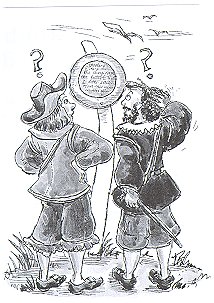|
|
It was way back in 1488 when Bartolomeu Dias anchored his
Ship in Table Bay that Robben Island was discovered.In
the 15th century Portuguese sailors utilised this island. Later British and Dutch colonialists and traders, used the island as an outpost and prison for many years. In 1591 the
Island was used as a refuge for all the disagreeing native people
of the new way. Mostly people of the Khoikhoi tribe, often hostile by
the trickery of losing their cows and land for barely nothing in
return. Khoikhoi herders and San hunters had been living in Southern Africa for thousands of years, when the explorers arrived from Europe. These tribes had travelled southwards towards Cape Town seeking out grazing pastures for their sheep and cattle to feed on. While they survived by hunting wild animals and gathering their food from the bush. It was very fruitful for the new explorers of the sea to trade with these native people. However, some did not bother to trade fairly, they used fire power and took from this gun powder free nation. The island also served as a post office where letters could be dropped off and picked up at various intervals.
In 1654 Riebeeck had his men live and work on the Island under the supervision of the Post holder, they were to find food resource, mine stone for buildings on the mainland, and various other tasks. Since they also had a better look out of the ocean , these men would also light fires and worn the settlers of incoming unfriendly ships. As a causal effect of each and every sailor who hunted there the wildlife became seriously threatened. Penguins, Seals and Tortoises becoming rarely seen. The Dutch were building colonies in the Cape and the East Indies. The Dutch rule caused a lot of resistance among the leaders of the Khoikhoi and Muslim nations of East India, some of these members constituted the Islands first prisoners. The first political prisoner was AUTSHUMATO in 1658, who was exiled to Robben Island, simply because he was taking back cattle the people believed to have been unfairly confiscated by European settlers. Autshumato was also one of the only prisoners to have escaped successfully.
A new group of prisoners arrived in Robben Island in the late 1600's they were the political leaders of Anti-Dutch governing in the East Indies, various captives were rulers in their land before the Dutch came. Many brave and courageous men, kings, princes, and religious leaders were convicted to Robben Island.
|
 With the arrival of Jan Van Riebeeck in the Cape in 1652, the location becomes vital
as a refreshment station. Van Riebeeck was employed by The Dutch East
India Company and brought many sailors to the Cape Of Good Hope. Trade or barter with the Khoikhoi allowed items like beads, tobacco and metals to be exchanged for their cattle and sheep, etc.
Ships on their way to the East Indies could stock up with fresh meat and
produce.
Some who visited the Cape feared the "uncivilised" tribal community and preferred to
be dropped off at Robben Island, where they could hunt Seals, Penguins and
Tortoises as the only available food source. They believed the Khoikhoi were cannibals
and avoided contact with the natives at any opportunity. Conflict became frequent on the
mainland, Robben Island became increasingly important for obtaining food on route across to
India. To avoid diseases such as scurvy, fresh produce was imperative for the sailors consumption.
With the arrival of Jan Van Riebeeck in the Cape in 1652, the location becomes vital
as a refreshment station. Van Riebeeck was employed by The Dutch East
India Company and brought many sailors to the Cape Of Good Hope. Trade or barter with the Khoikhoi allowed items like beads, tobacco and metals to be exchanged for their cattle and sheep, etc.
Ships on their way to the East Indies could stock up with fresh meat and
produce.
Some who visited the Cape feared the "uncivilised" tribal community and preferred to
be dropped off at Robben Island, where they could hunt Seals, Penguins and
Tortoises as the only available food source. They believed the Khoikhoi were cannibals
and avoided contact with the natives at any opportunity. Conflict became frequent on the
mainland, Robben Island became increasingly important for obtaining food on route across to
India. To avoid diseases such as scurvy, fresh produce was imperative for the sailors consumption.